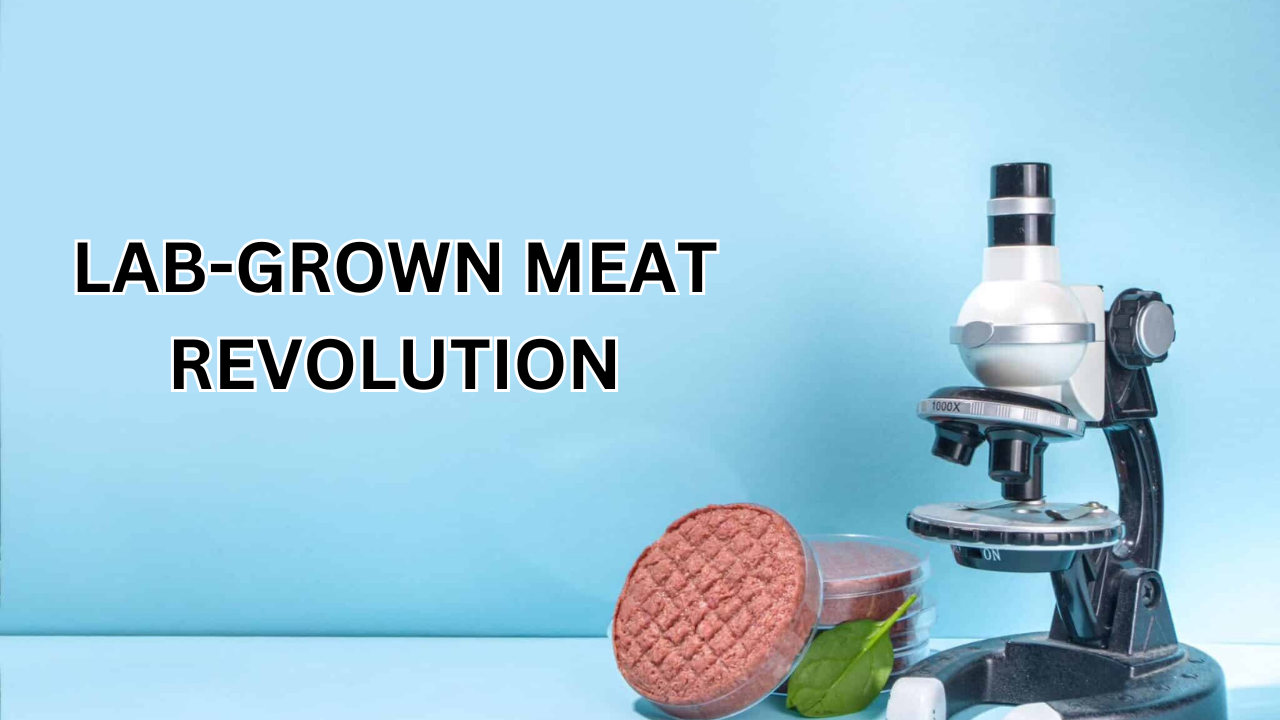The lab-grown meat revolution represents a groundbreaking shift in the way we think about food production and sustainability also known as cultured or cellular meat lab-grown meat is produced by cultivating animal cells in a controlled environment bypassing the need for traditional livestock farming this innovative approach has the potential to address some of the most pressing challenges in the food industry such as the overuse of natural resources environmental degradation and ethical concerns surrounding animal welfare by growing meat in laboratories researchers can create real high-quality meat without the environmental impact associated with conventional farming such as deforestation excessive water use and greenhouse gas emissions it could significantly reduce the need for antibiotics and hormones often used in traditional meat production.
Lab-grown meat also promises to transform global food security with the world population expected to rise demand for meat is projected to increase putting further strain on our already stressed agricultural systems cultured meat offers a potential solution to meet these growing demands more sustainably and ethically while still in the early stages of development lab-grown meat has made significant strides toward commercialization bringing us closer to a future where sustainable cruelty-free meat is accessible to everyone.
Benefits of Lab-Growth Meat:
Lab-grown meat also known as cultured or cell-based meat offers several significant benefits that could revolutionize the way we produce and consume animal products one of the most compelling advantages is its potential to address the environmental issues associated with traditional livestock farming cultured meat production requires far fewer resources such as water land, and feed compared to conventional meat farming it also generates less greenhouse gas emissions-reducing its overall environmental footprint face of climate change
In addition to its environmental benefits lab-grown meat can improve animal welfare since it is produced by cultivating cells in a lab environment rather than raising and slaughtering animals it eliminates the need for factory farming practices which often involve inhumane conditions this could contribute to a more ethical and sustainable food system.
Health-wise lab-grown meat could offer a safer and healthier alternative to traditional meat. It allows for precise control over the production process ensuring the meat is free from antibiotics hormones or contaminants that can be present in conventionally raised animals it could be engineered to have improved nutritional profiles such as reduced fat content or the inclusion of beneficial nutrients like omega-3 fatty acids.
Production Process:
The production process of lab-grown meat involves several carefully controlled steps each crucial for turning animal cells into a viable consumable product it begins with sourcing a small sample of animal cells typically muscle cells which are then placed in a nutrient-rich culture medium that promotes their growth and division these cells are harvested from a living animal through a painless biopsy which ensures that no animals are harmed in the process once collected the cells are placed in bioreactors which are specialized tanks designed to simulate the natural environment inside an animal body providing them with the necessary conditions such as temperature oxygen, and nutrients to grow and multiply.
As the cells proliferate they begin to form muscle tissue a process that mimics the way tissue would develop naturally in an animal to ensure that the resulting meat has the texture and structure of conventional meat scaffolding materials may be introduced to encourage the cells to grow in specific patterns creating fibers and layers that resemble muscle tissue these scaffolds can be made from biocompatible materials that dissolve as the meat matures allowing the tissue to grow naturally over time the cells differentiate and mature into more complex muscle structures.
Market and Industry Trends:
The lab-grown meat industry is rapidly evolving, reflecting a dynamic market shaped by technological advancements consumer preferences, and global sustainability goals in recent years the sector has experienced significant growth driven by increased awareness of the environmental and ethical challenges posed by conventional meat production startups and established food companies alike are investing heavily in research and development to refine the production process improve scalability and reduce costs early prototypes of lab-grown meat were prohibitively expensive but technological innovations have dramatically lowered production costs making these products increasingly viable for mass-market adoption Companies are now focusing on creating a variety of products from the ground.
Consumer demand for sustainable and ethical food options has also fueled the industry momentum surveys indicate a growing interest among environmentally conscious and health-aware consumers, particularly in urban and affluent markets governments and regulatory bodies are beginning to respond to this shift with some countries already approving lab-grown meat products to be sold commercially for instance, Singapore became the first nation to approve the sale of cultured meat setting a precedent that other regions are likely to follow in parallel public and private investments in the industry are increasing with venture capital firms and sustainability-focused funds channeling billions of dollars into startups in this space.
